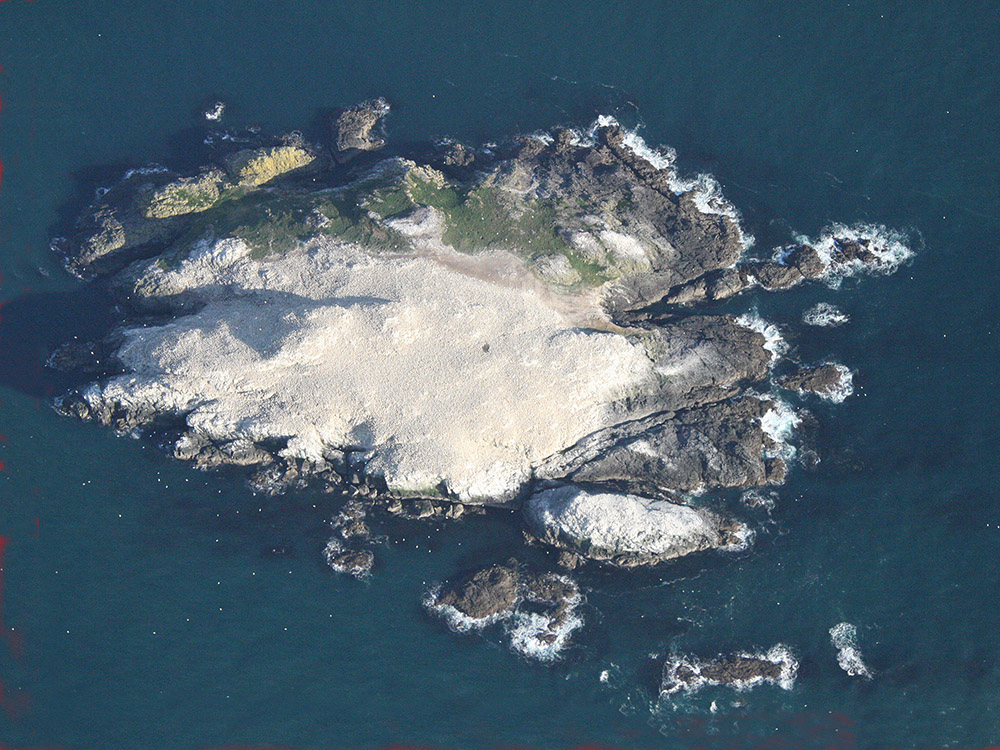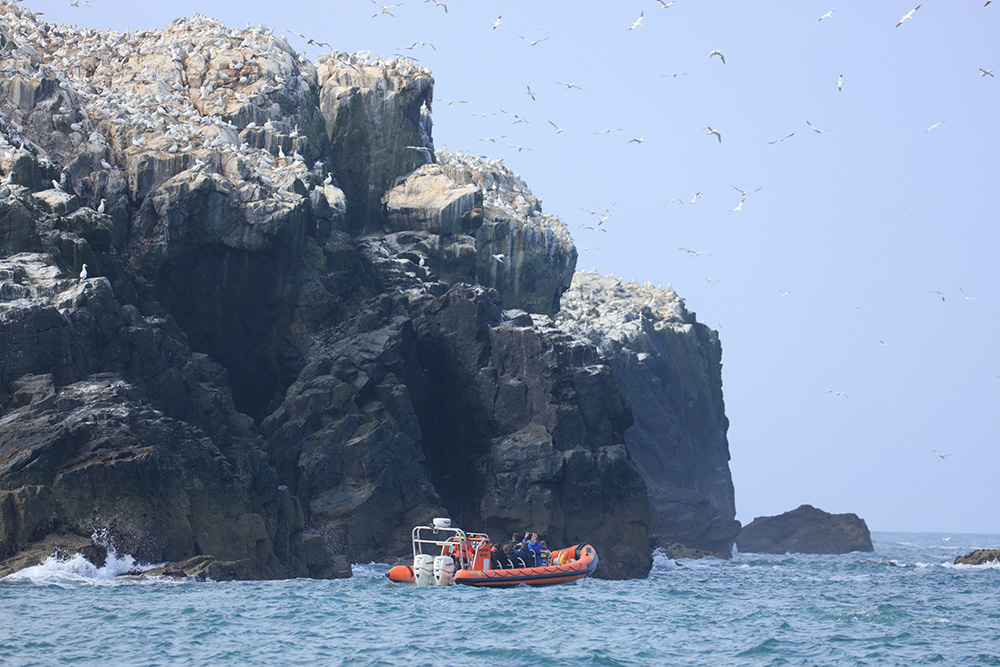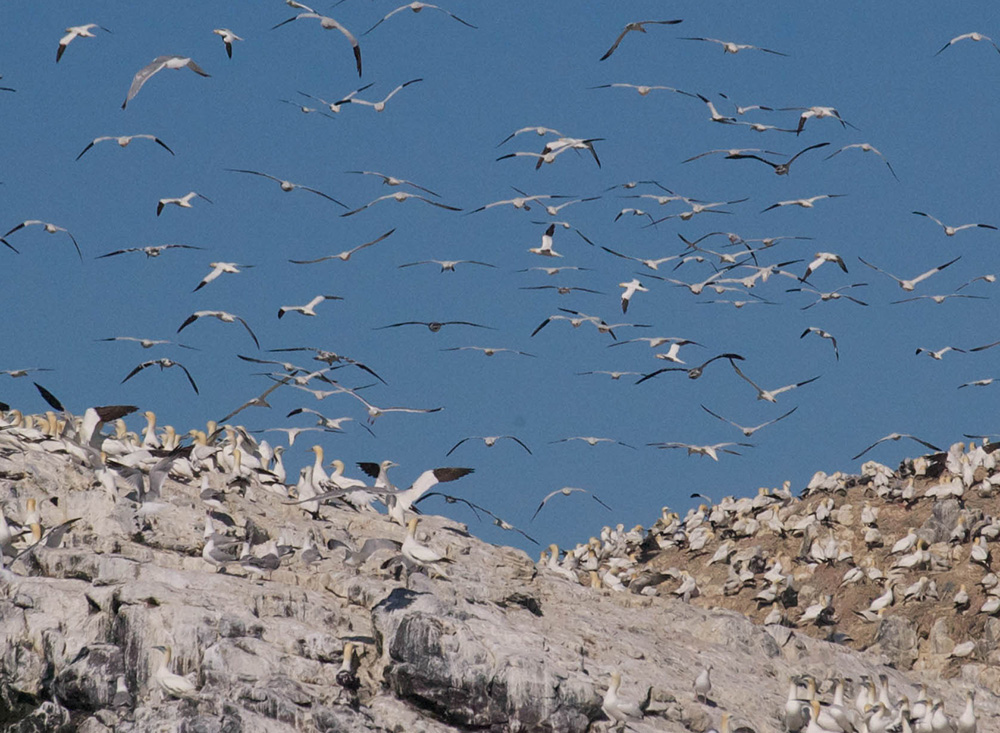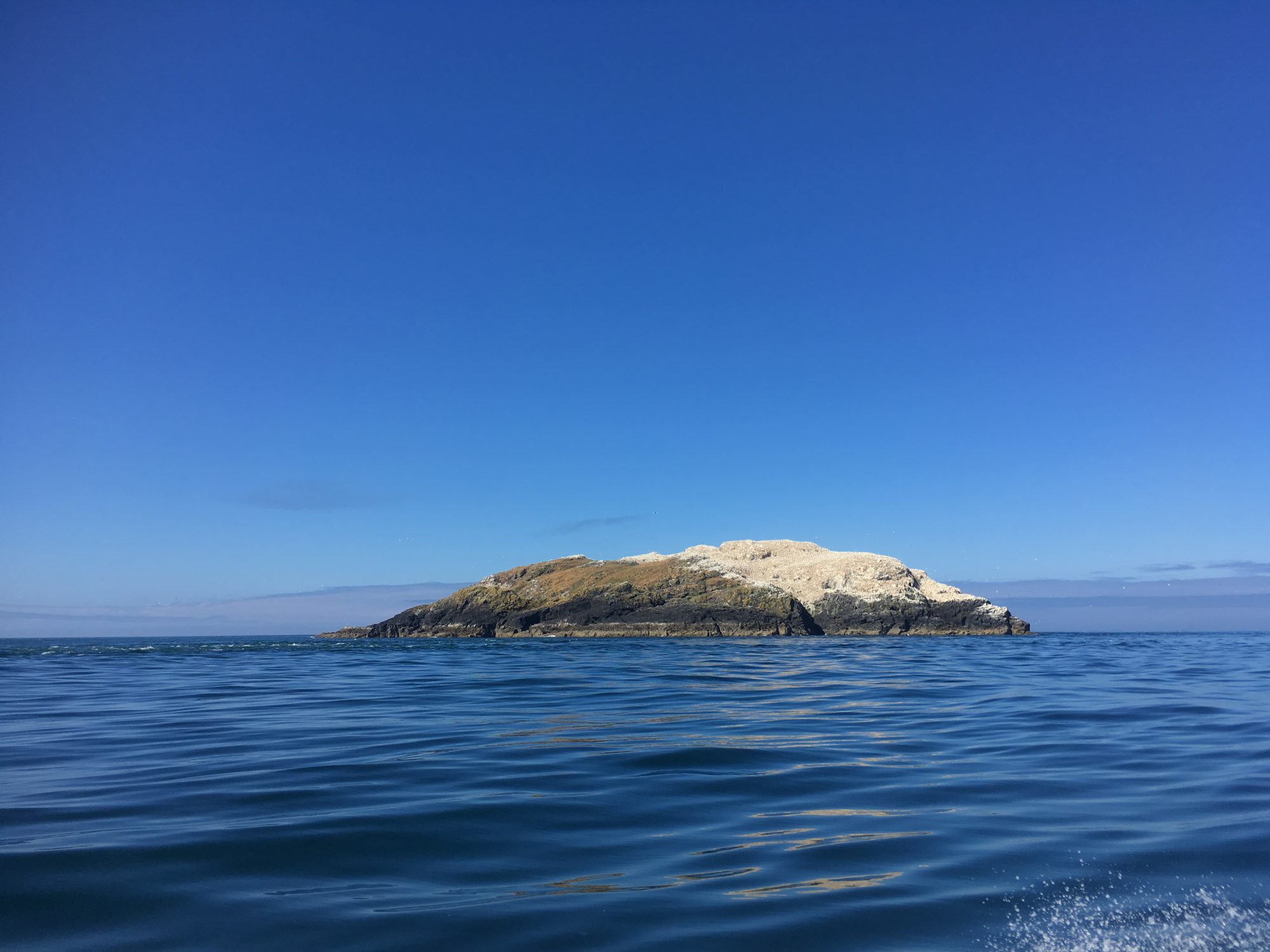Gannet nests are uniformly spaced across the island, just a neck and beak’s distance away from their nearest neighbour in every direction. This is because, whilst space is at a premium, gannets are also quite aggressive birds.
In 1802 there was no record of any gannets on Grassholm, and it is thought that, prior to their arrival, there were as many as 250,000 puffins breeding on the island.
There were so many that it is likely they became a victim of their own success and, being burrow nesters, burrowed themselves out of existence as their nests caused the thin topsoil to collapse.
It is also believed that the sheep who used to graze the island may have contributed to the collapse of the puffin burrows. The remnants of these burrows can still be seen today in small areas not inhabited by the gannets.
In 1860, twenty pairs of gannets were recorded on Grassholm; by 1905 this had risen to 300 and, when the RSPB bought the island in 1948, there were 8000 pairs on the island.













